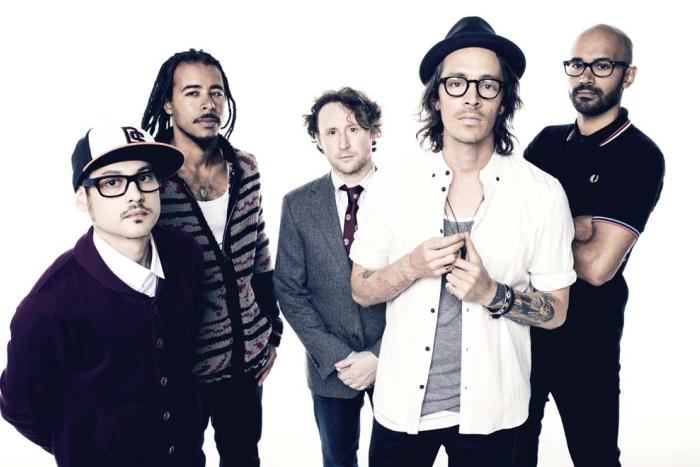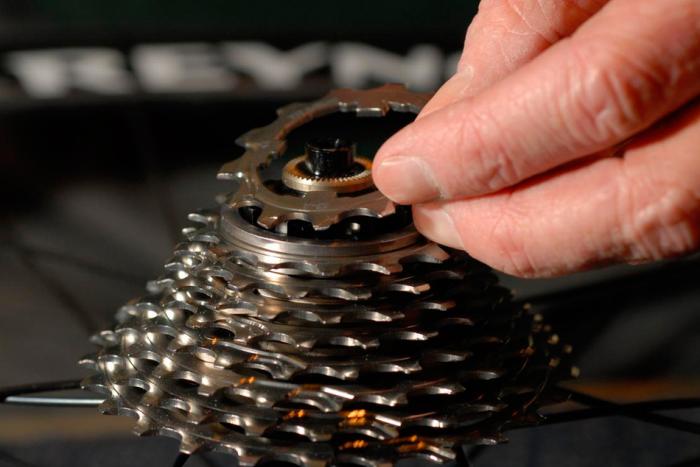His problem was that I didn’t take off my hat during the National Anthem; that’s what led my girlfriend’s grandfather to grab me by the arm of my beat-up olive-green army jacket I’d purchased from a thrift store and tell me that I didn’t have the right to wear a proud soldier’s coat if I didn’t have enough respect for the flag. I was fourteen, and it wasn’t an intentional act of rebellion or disrespect—I just didn’t want everyone to see my hat hair.
“You should join the army so you can learn some respect,” he said as he let go of my jacket. “Then you can wear this sort of thing with some goddamned pride.”
Years later I visit an army navy surplus store run by an old Korean lady that still sells brass knuckles if you know how to ask for them. There are plenty of American flags to buy, United States Marine Corps T-shirts, dog tags, and bullet shells in a plastic Halloween jack-o-lantern. I was there because I wanted to try to find a jacket like the one I wore at the football game when my high school girlfriend’s grandfather yelled at me, because I just saw a guy wearing one just like it, and thought, “I really miss that thing.” To anybody who has ever spent time shopping in an army navy store, you probably know the deal: people buy surplus goods not needed by the military at discounted prices, and people looking for costumes, survivalists, and guys like me end up as customers. “We get a lot of business from the bar across the street,” the Korean lady’s son tells me as he points to an establishment named “Secrets” with a big rainbow flag in the window. “My mom thinks it’s a veterans hall,” the son says with a smile. I don’t end up finding a jacket that fits me well, but I do find a pair of old combat boots, an old German army warm-up jacket, and a button with a French parachutist badge that I put on my denim jacket. Somehow all of these things fit into my skewed philosophy of hating war, but loving what I call “Military Industrial Complex Chic.”
It’s hard to calculate exactly how much of my wardrobe has been influenced by various armed forces from the 20th century, but I figure, for the sake of argument, I can take a quick look into my closet and see what I’ve got. That reveals two pairs of Clarks desert boots; a pair of skinny Michael Bastian for Gant cargo pants that my wife says I can only wear inside the house or outside the city limits; a blue Ralph Lauren sweater designed to look like something a mechanic would wear during the Second World War; a waxed cotton green British army jacket; and about a dozen T-shirts.
The simple and ubiquitous shirt in the shape of a T is the most famous example of a garment with army roots, starting as crew-necked, pure cotton undergarments issued to American Navy officers for the scorching summer months during 1898 Spanish-American War. The shirts were soon issued to all military officers, and eventually made their way back to the farms and factories where those soldiers worked. The T-shirt remained a utilitarian piece of clothing until 1951 when Marlon Brando donned one as the hot-tempered and hunky Stanley Kowalski in the film adaptation of Tennessee Williams’ A Streetcar Named Desire. In an instant, the brooding and brawny sex symbol turned the simple T-shirt into a piece of clothing you could wear on its own, and changed what we wear forever. Two years later, in 1953, Brando would do it all over again, taking a leather jacket, its roots in the Second World War, and making it synonymous with cool and rebellion in the 1953 film The Wild One.
The Wild One, black motorcycle leather jackets, and our entire cultural fixation with motorcycle gangs as the last true outlaws all can be traced back to the 1947 Gypsy Tour motorcycle rally held in Hollister, California, where thousands of displaced war veterans (many of them suffering from the then-unknown effects of Post-Traumatic Stress Disorder) rolled into town with gangs such as the Pissed Off Bastards of Bloomington, the Boozefighters, the Market Street Commandos and the Galloping Goose Motorcycle Club, and overwhelmed the locals and seven-member police force that wasn’t expecting an estimated 4,000 men on motorcycles.
While the actual riot wasn’t much of a riot in the traditional sense (i.e., total chaos), there was plenty of drunken rowdy behavior, loud motorcycles racing down the normally quiet streets, and passed out gang members sleeping on public benches and sidewalks to cause sensationalist reporters all across the country to write about the anarchy in the small California town. Suddenly, motorcycle gangs came to represent the seedy underbelly of peacetime postwar USA, and when Brando as Johnny Strabler and his Black Rebel Motorcycle Club roared into Carbonville, California, to cause havoc, they did it in the type of black leather motorcycle jackets worn by servicemen since the 1920s. The black motorcycle jacket became the symbol of badassery that lives on to this day, as evidenced by Levi’s travelling Oil & Leather exhibit that featured 21 hand-painted biker jackets.
While Brando may have made every teenager want to wear a T-shirt and leather jacket, the British are the undisputed leaders of taking footwear created for military purposes and turning it into a fashion statement. First, it was ankle-high desert boots, derived from the chukka boots worn by polo players, which eventually found their way onto the feet of British servicemen during the Western Desert Campaign fought on the South African sands. After the war, and thanks to the huge surplus of the suede boot with rubber soles, fashion-forward youths began to wear them along with their tailored Italian suits, underneath their army surplus parkas, which, writer Nik Cohn points out, many decorated with “bits of fox-fur sewn around the collar,” while they rode their Vespa scooters and became known all across England as the Mods. (It should also be noted that the logo of the most popular band associated with the mod movement, The Who, was the RAF roundel, and members of the band loved dressing up their jackets with medals.)
As the history of British subculture tells it, the mods eventually begat skinheads, whom most historians say were originally just mods without all the disposable income. Some mods could afford nice things, while the original skinheads had to improvise a bit more with hand-me-down trousers, suspenders, and the Fred Perry tennis shirts that were popular at the time. But what best represented the post-mod skinheads were thick leather boots, most notably the style introduced to England in 1960: Dr. Martens.
Ironically enough, Dr. Martens wasn’t English; Dr. Klaus Märtens was a German doctor during the Second World War. He left medicine after the war to concentrate on making a more comfortable boot after spending the war wearing the heavy and uncomfortable standard-issue clunkers. Using soft leather and discarded rubber found all over the ruins of his city, Märtens created a new kind of boot whose popularity took off instantly, just not with soldiers or workmen, but instead with housewives who made up 80 percent of sales before Dr. Martens started showing up in England. The shoes adorned the feet of postal workers, mechanics, and factory workers from Birmingham to Manchester, and every other mill town in each direction started wearing them, eventually passing them down to the first generation of British skinheads.
Mods, skinheads, and punks have all pulled surplus army gear off the shelves for decades. Rock stars wear aviator sunglasses that Ray-Ban developed for pilots in 1936 (General Douglas MacArthur wore a pair when he landed on the beach in the Philippines during the Second World War). Lindsay Weir (played by Linda Cardellini), from the show Freaks and Geeks, was the prototypical ’70s and ’80s stoner in her green army jacket. The band Turbonegro dresses up in sailor caps,11Although some would say that’s all for homosexual innuendo, an attempt at shock value by a band whose songs include “The Midnight NAMBLA” and “Rendezvous With Anus.” crust punks repurpose bullets to make belts, and bomber jackets never go out of style. Clothes originally developed for military use have historically been coopted by the counterculture and repurposed to signal social or political rebellion. From the camouflage shirts once on the upright backs of obedient soldiers now worn by skateboarders who blatantly disregard “Do not Skateboard” signs, to the sartorial-minded gentleman’s closet filled with sweaters and jackets either purchased as surplus or recreated by some major fashion house, or me as the young jerk who wouldn’t remove his hat during the National Anthem, but still wore an old army jacket with some soldier’s name I didn’t know sewn onto it.
Say what you want about the armed forces of the world, but they do more than just protect or assault the population: They show it how to dress, too.






